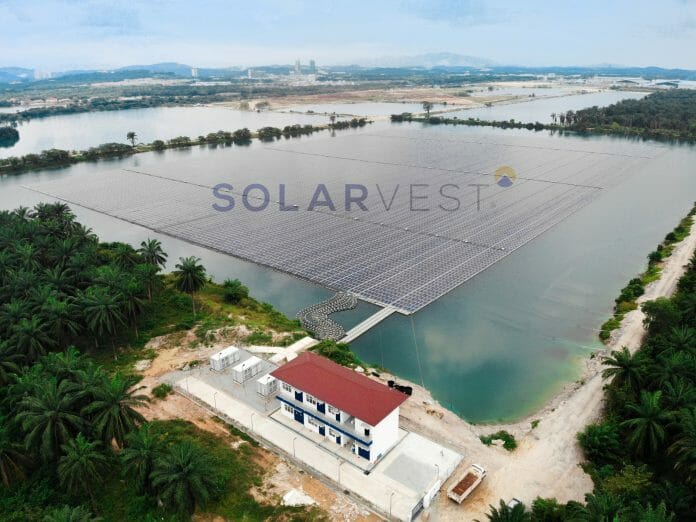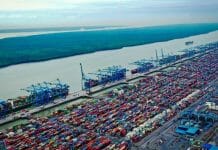Solar photovoltaic (“PV”) system specialist, Solarvest Holdings Berhad has successfully installed and commissioned a 13.0 mega-watt peak (MWp) large-scale floating solar plant in Dengkil, Selangor. The plant is one of its kind in Malaysia and is now the largest floating solar farm to be commissioned thus far.
The solar plant was built on an ex-mining lake for WD Solar Sdn Bhd, part of the WD Group whose principal activities are in the sand mining and transport sector.
About 38,790 pieces of solar panels were installed on a panel of floaters that extends approximately 53 hectares of a lake surface, equivalent to 30 football fields. The floating plant will generate about 16,640 MWp of solar power that could potentially power up over 5,800 houses and offset about 11,548 tonnes of carbon footprint annually.
Unlike ground mounted solar farms, floating solar PV is built on water surface. Some of the key challenges in building the plant includes the consideration of water levels, safety of the plants, selection of material such as floater and anchorage system, as well as the accessibility of the plant for operations and maintenance activities.
Group Chief Executive Officer of Solarvest, Davis Chong Chun Shiong said, “We are proud to deliver yet another groundbreaking project and this marks the completion of our ninth LSS projects under the LSS programme. It is a very special project for us as it is our first foray into the large-scale floating solar segments and it opens doors to more possibilities for us in the LSS segments.”
“In addition to ground mount and rooftop projects, we see great potential in floating solar farms as it provides solar investors an alternative solution in areas where land is scarce. As compared with ground mounted solar plant, floating PV or floatovoltaics provides higher plant productivity as the water bodies act as natural coolants that improve the plant’s efficiency rates. The shade from the panels also helps to reduce the evaporation rates of the lake as well as it improves the water quality by restricting the amount of algaes from growing.”
“While the floating PV market is considered a niche, it is projected to grow on an average rate of above 20% globally in the coming five years. Floating PV is dubbed as the future third pillar of the global solar PV market, and Asia is expected to account for about two thirds of the global demand. The rising demand is also expected in South East Asia and Taiwan, where we are actively pursuing for opportunities in these regions. Locally, there are more than 50 lakes in Selangor alone and many of them are underutilised, translating into opportunities for us to harvest solar energy efficiently,” he concluded.
In Taiwan, the local government has offered Feed-in-Tariffs (FITs) specifically for floating solar systems to spur growth in this segment. Any floating systems coming onstream in the second half of 2020 will be eligible to receive a FIT of NTD 4.2709–4.7067/kWh for 20 years. Globally, there are more than 60 countries actively pursuing the deployment of floating solar PV, out of which 35 countries are home to an estimated 350 operational floating solar PV systems with a cumulative capacity of approximately 2.6 gigawatts (GW) as at end of August 2020.









